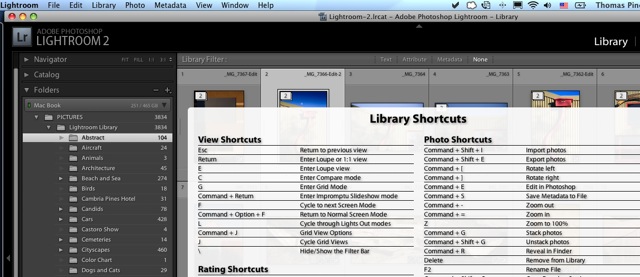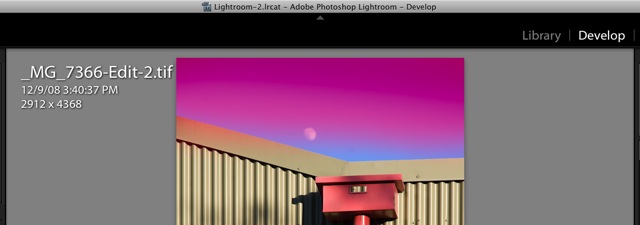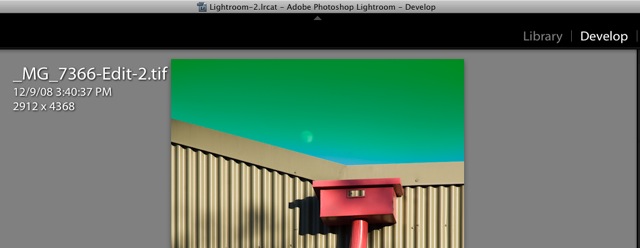LR2 displays few of these
When you want an on-screen reminder of the many keyboard shortcuts in Lightroom 2, you press the ‘Command – /’ key pair for a heads-up display on your screen, thus:

Click on the pop-up display to dismiss it.
The snag is that this display only shows a small fraction of what is available. You can download a PDF of all LR2 or LR1 shortcuts here. Surprisingly,I can find no such LR2 guide on Adobe’s web site.
Dense as it is, it repays study.
For example, I have found use of the adjustment brush frustrating in that one has to view the red mask to see the area which has been brushed. You do this by hovering the mouse cursor over the mask pin (the little blob which appears on your screen). If you want the red mask to show continuously when using the adjustment brush you can toggle full time display while the adjustment brush is in effect by hitting ‘O’ on your keyboard. This makes masking very easy and allows you to adjust exposure/brightness etc. after you have delineated the area of choice for adjustment.

In the above example, after switching on the adjustment brush in the Develop module I hit ‘O’ and, thereafter, could see the red mask as I applied it by brushing areas of the image. Once satisfied that the right parts had been brushed, I switched the red mask off (hit ‘O’ again – it’s a toggle) and then applied adjustments as required.
If the default red color interferes with the image and your assessment of the masking you have applied, you can cycle through mask color options using the Shift – O key combination while the adjustment brush is live. In the following example I have changed the mask color to green using the ‘Shift – O’ key combination.

Very handy. There are many more gems in this long list and a few are even worth learning! Now if only Adobe could add all their keyboard shortcuts to their ‘Command – /’ key on screen display.
Follow-up: A reader has kindly pointed out that Adobe’s version of the short cuts is to be found here and the presentation, which is by module rather than in aggregate, is far more useable.